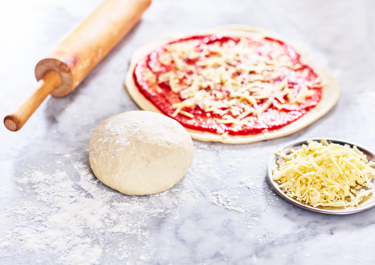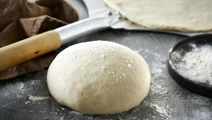
No yeast pizza dough

Instructions
No yeast pizza dough
Ingredients
Baking powder | 2 tsp |
|---|---|
Flour | 360 g |
Salt | ½ tsp |
Water | 250 ml |
Olive oil | 50 ml |
Homemade pizza dough with no yeast
Craving homemade pizza with your favourite toppings – right now? This recipe is for you. By swapping yeast for baking powder, you turbocharge your dough and make it ready for baking in an instant.
Why you should make pizza dough without yeast
The classic way of making pizza dough calls for yeast and plenty of time, as the dough is left to ferment slowly in the fridge. The result is a crispy, flavourful pizza with a fluffy, chewy crust. No yeast pizza dough is not as chewy or fluffy – but it’s an alternative whenever you want to make your own pizza but can’t wait for 24 hours before digging in.
What you need for pizza crust without yeast
This no yeast alternative has most of the classic pizza dough ingredients except yeast. It’s based on wheat flour, mixed with water, extra virgin olive oil, and a good pinch of salt. Baking powder is usually a mix of sodium bicarbonate, cornstarch, and a slightly acidic component that helps kick off the aerating effect of the bicarbonate.










